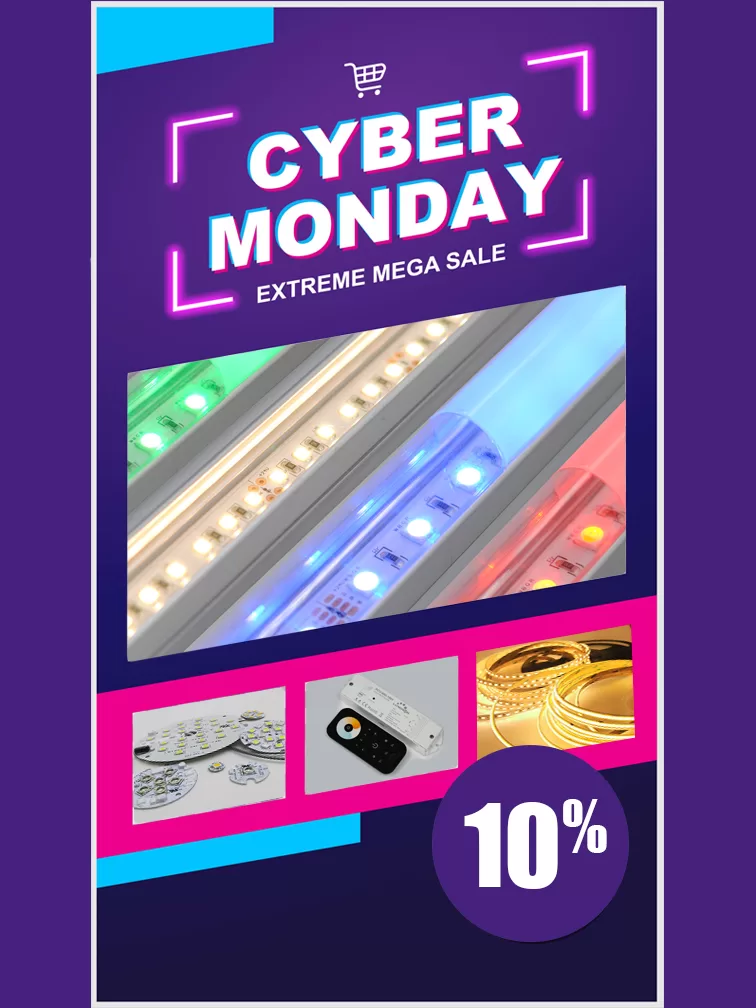Cree has announced the XLamp eTone LEDs — chip-on-board (COB) products that deliver 90-CRI color quality with the same efficacy levels of competitive 80-CRI offerings. Lumileds has announced the Luxeon V2 family of high-power LEDs that utilize technology developed in the company’s chip-scale package (CSP) products to bring higher performance to a 3.5×3.5-mm package. Both offerings deliver solid-state lighting (SSL) product developers a path to offering luminaires that meet the premium level of the DesignLights Consortium (DLC) qualified products list (QPL).
Cree COBs
Cree asserts that the eTone products deliver 155 lm/W for a 3000K-CCT LED operating at a relatively-high 85°C temperature. Generally, LEDs with warmer CCTs and high CRI inherently deliver lower efficacy than those at cooler CCTs and lower CRI. Cree says the eTone 90-CRI products feature efficacy up to 17% higher than other 90-CRI LEDs on the market, including products from its own or competitors’ portfolios.
The eTone technology will be offered across three Cree product lines — the CXA2 ceramic-based LEDs, and the CMA and CMT High Current metal-based LEDs (shown below). The CXA2 line was Cree’s second-generation of ceramic-based COBs launched initially in 2016. Subsequently, the company offered the CMA COBs based on an aluminum substrate because the SSL product developer community is split as to the benefits of ceramic and aluminum. The CXA2 and CMA LEDs generally share the same footprints. Then earlier this year, Cree announced the CMT portfolio with footprints matching products from Citizen Electronics, a company that has been a market leader in metal-substrate LEDs.
As for how Cree achieved the efficacy gains, the company would not offer complete details, but the gains are in part due to Cree’s overarching COB architecture. Paul Scheidt, who leads product marketing for LEDs at Cree, said that basically COBs may look the same, but the materials used in the various platforms may be quite different. He said even LEDs with similar spectral power distribution (SPD) at low current and temperature react differently at high-power states and many might not survive at the power levels needed to deliver 155 lm/W.
Cree conversely has long been focused acutely on reliability across its lighting-class LED family. Scheidt said the company has developed enhancements in phosphors, substrates, encapsulants, and more than allowing its COB LEDs to reliably support higher power density and operation at higher temperatures.
Indeed, Cree looked back to a laboratory demonstration of a high-power, high-CRI LED to demonstrate its commitment to solving the reliability issue. “Two years ago, Cree achieved an LED industry first with our lab demonstration of a single high-power LED that hit an extraordinary 134 LPW at 1587 lm, 85°C, and 90 CRI,” said Dave Emerson, Cree LEDs executive vice president, and general manager. “Cree is committed to turning our industry-first R&D results into viable commercial products that offer customer-ready LED solutions where others do not. Today’s release of our eTone LEDs that deliver 90 CRI at the same efficacy as 80 CRI means that lighting manufacturers no longer have to sacrifice top-tier efficacy to achieve excellent color quality for indoor lighting applications.”
Cree has long prided itself on commercially delivering technology from laboratory milestone demonstrations within 18 months to two years. Meanwhile, the new products will deliver great flexibility to its customers.
“Cree’s latest innovation will redefine the premium lighting market with designs that were previously impossible,” said Massimo Parravicini, R&D director at Reggiani Lighting. “Cree is enabling us to create 80-CRI and 90-CRI lights that share the same intensity, beam angle, and power consumption with just one product design. This no-compromise COB solution gives us the industry’s top performance, the excellent light quality that our customers require, and the LED form factors that will drop right into our existing designs.”
Luxeon V2
Moving to the high-power discrete LED sector, Lumileds had introduced the Luxeon V LED in August 2017, claiming lumen output 50% greater than competitive products. As we mentioned at the time, the company had not released a new high-power LED in some time, focusing more on mid-power, COB, and CSP devices. But the company has delivered a relatively quick upgrade path in the Luxeon V2 with both targeting high-output applications such as street lights and sports-field lighting.
At first glance, the V2 specification highlights are respectable yet not extreme. Lumileds said that a 4000K-CCT LED will output 315 lm when driven at 700 mA, representing 160-lm/W efficacy. But SSL product developers can drive the LEDs at levels to 2.4A. At 2A, lumen output climbs to 760 lm while efficacy drops to 123 lm/W.
Still, it’s the architectural approach that is interesting. Lumileds was among the earliest movers in CSP technology. The company first revealed CSP LEDs during Strategies in Light back in 2013. And the company has surely spent much of its R&D effort in recent years on CSP development.






